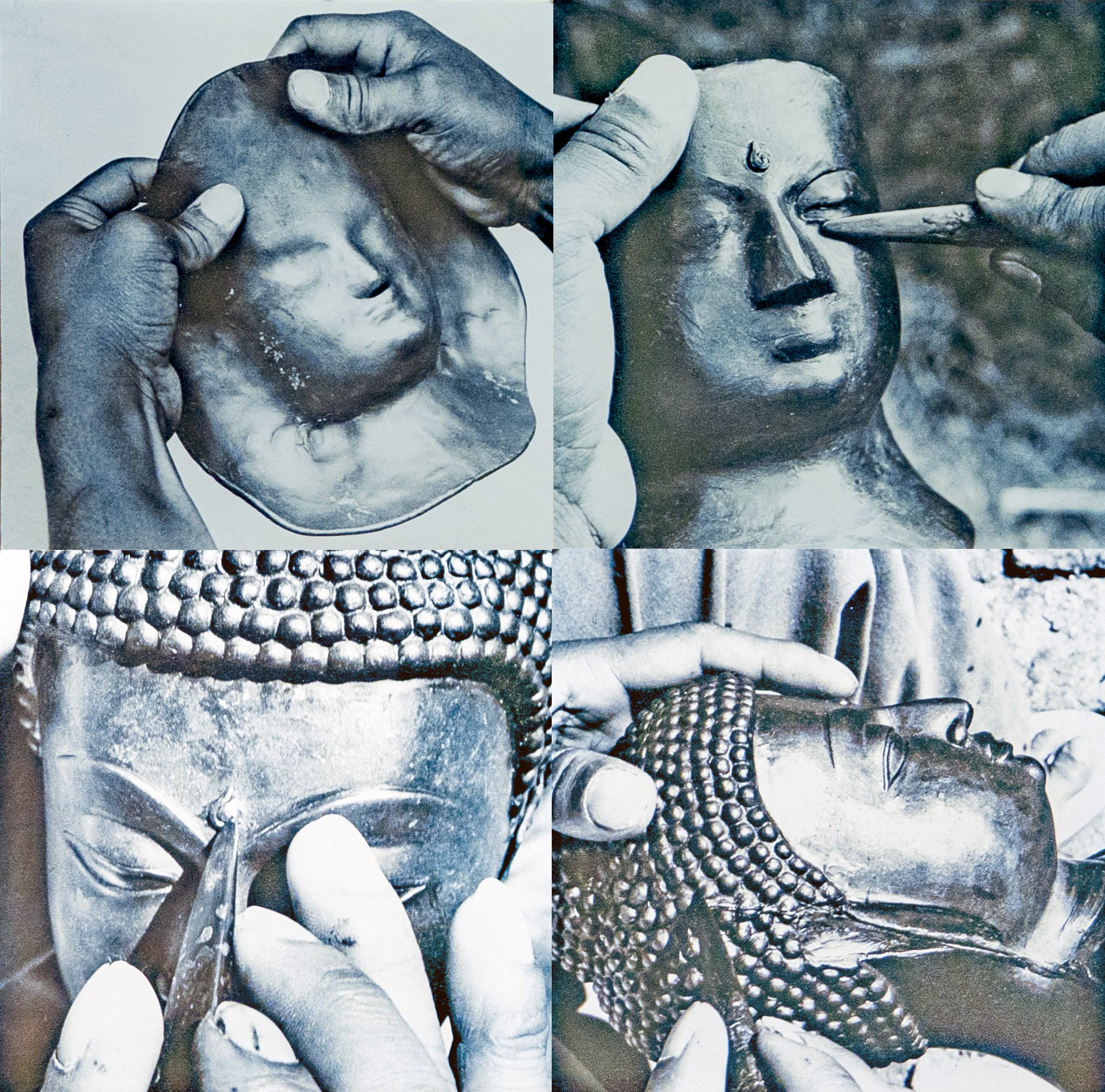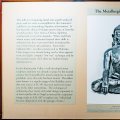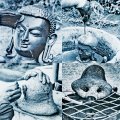Patan Museum (Nepal): photo 210
Photo 210 of 212 in Gallery: Patan Museum (Nepal)

Image title: Making a cast metal image
Description of the photo
The first step in making a cast metal image in the lost wax process, called thajya in Newari, is sculpting the image in the wax that will hence be “lost.” The wax mixture is prepared by melting together beeswax, vegetable oil, and resin from the sal tree, a tropical hardwood. After the wax hardens, lumps of it are warmed and pounded into thin, flat sheets. The wax sheet is further warmed over a charcoal brazier and the artisan begins to gently mold the image with the tips of his fingers. He first shapes the rough contours of the face and neck and then sculpts the facial features.
The excess wax of the sheet is cut away with a thin, heated steel blade, leaving just the contour of the face and neck. As shown on the left side of the model, the facial features are further refined with a sculpting spatula made of buffalo horn, called a silayku in Newari. Using the different shaped ends of this versatile tool the artist articulates the facial features, as illustrated on the right hand side of the model.
The front and back halves of the Buddha head are produced from separate sheets of wax, allowing the artist to also manipulate the wax from behind. Then the halves are joined, the head covered with small beads of wax which will be refined to represent hair, and the face completed. Here the head is displayed still in halves to allow the inside to be seen.
The head of an image of the Buddha is covered with small beads of wax representing short curls. This is a tedious process because for each curl a precise amount has to be assessed and pinched from a soft piece of wax. It is rolled between the thumb and forefinger, heated over a brazier and attached by pressing it to the head. To further complicate the process the beads in each row change in size depending where they are placed on the head, and then must be further refined by hand using the silayku tool.
To join the halves of the head their edges are heated over a brazier, called a milayca in Newari, and pressed together. A long thin bamboo stick with one end wrapped in cloth, called a sikathica in Newari, is dipped into a small pot of liquid wax. The liquid wax is dropped onto the unfinished seam which is worked smooth with the silayku tool
Gallery information:
The Patan Museum is located on the Durbar square of Patan (Lalitpur/Lalitapura, Kathmandu, Nepal) which is associated Keshav Narayan Chowk (Keshavnarayan)—a form of Lord Vishnu. Being listed as a World Heritage Site, the whole of Durbar square is filled with exquisite temples, sculptures and other ancient structures, of which the ancient history history can be traced to the Malla Kings of Lalitpur. It is an important site for both Buddhism and Hinduism.
Photo details:
High resolution:
Download file
Size: 2.25 MB
Resolution: 2105 x 2081
© Photograph by Gabe Hiemstra.
License: CC BY-NC-ND 4.0

